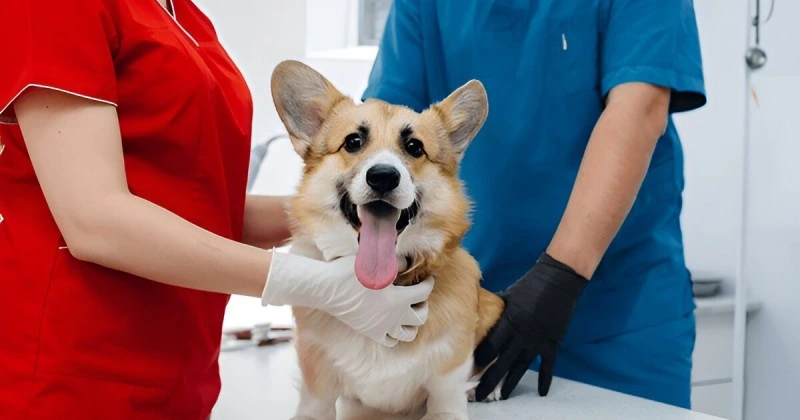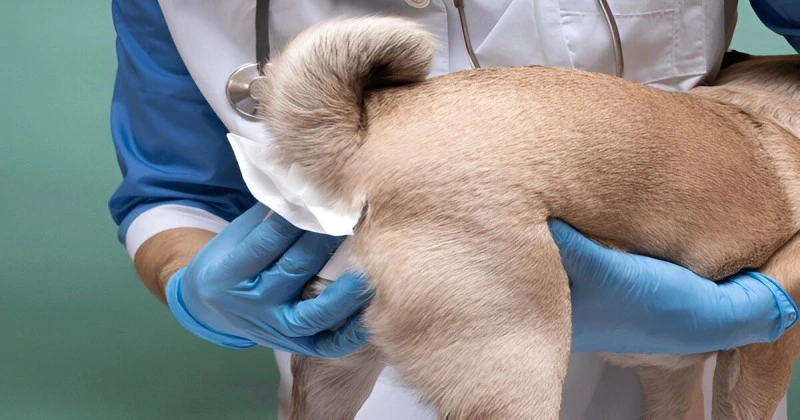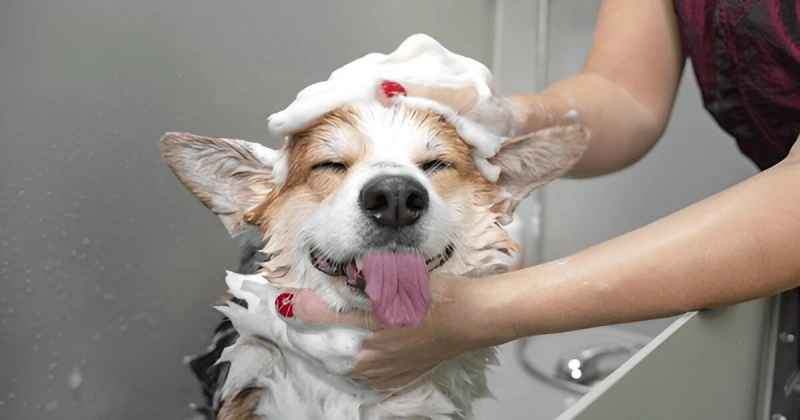Table of Contents
Introduction
Few things worry a dog owner more than watching their pup suddenly scooting their butt on the floor. It’s not just awkward to witness—it can also signal discomfort or even pain. Whether it’s your dog dragging its bottom across the living room rug or showing sudden signs of irritation, dog scooting is a behavior that demands attention.
So, why do dogs scoot on their butt in the first place? In many cases, it’s their way of relieving irritation around the anal area. But it can also stem from more serious issues like anal gland impaction, allergies, parasites, or even infections.
This blog will guide you through effective, natural home remedies for dog scooting, backed by pet care insights. From dog butt scooting episodes to ongoing concerns, we’ll break down how to keep your dog comfortable—and when it’s time to head to the vet.
What Is Dog Scooting?

Dog scooting is the act of a dog dragging its rear end across the ground—whether it’s your carpet, hardwood floor, or the grass in your backyard. While it might look amusing at first, this action is almost always driven by discomfort.
Common Causes of Dog Scooting:
1. Anal Gland Issues
Dogs have two small anal glands located near the anus. These glands produce a smelly fluid that helps with scent marking. When the glands become impacted or infected, your dog may scoot its butt on the floor to relieve the pressure.
2. Allergies or Irritation
Environmental allergens like pollen, grass, or household cleaners can irritate a dog’s rear end. Food allergies are also a culprit—especially in grain-heavy or low-quality diets.
3. Parasites (Worms)
Intestinal worms, especially tapeworms, can cause itching around the anus, leading to butt-scooting behavior.
4. Skin Infections or Injuries
Cuts, fungal infections, or bacterial buildup around the anal area can make it itchy or painful, triggering dog butt scooting episodes.
When Is Dog Scooting Normal?
Occasional scooting might just be a quirky moment after a trip to the backyard or following a bowel movement. However, frequent or aggressive scooting—especially paired with licking, whining, or visible swelling—needs further attention.
If your dog scoots just once and seems fine afterward, it may not be anything serious. But if it becomes a pattern, it’s time to act.
When to See a Vet

While home remedies for dog scooting are helpful for mild and occasional cases, it’s essential to recognize when your pup needs professional medical care. Here are some warning signs:
Signs It’s Time to Call Your Vet:
Swelling or Redness Around the Anus
If your dog’s rear looks inflamed or swollen, it could indicate anal sac infection or abscess, which requires veterinary treatment.
Bleeding or Pus
Any signs of bleeding, pus, or foul-smelling discharge from the anal area suggest a serious issue, possibly requiring antibiotics or even gland expression under sedation.
Persistent or Worsening Scooting
If your dog continues scooting their butt on the floor despite cleaning and diet changes, there may be an underlying medical issue that home remedies can’t fix.
Signs of Pain or Anxiety
Is your dog whining, snapping, or avoiding sitting down? These are indicators that scooting is not just a habit—it’s a pain response.
Visible Worm Segments
Tiny rice-like segments near your dog’s rear or in their stool are a clear sign of tapeworms, which need medication, not just home care.
While home remedies for dog scooting can make a real difference, they’re not a replacement for professional care when symptoms escalate. Always trust your instincts—if something seems off, it’s worth making the vet call.
Top Home Remedies for Dog Scooting

If your pup has been dragging their behind across the floor, there are several safe and effective home remedies for dog scooting that may offer relief. These solutions are simple, natural, and often prevent future episodes—without immediately jumping to vet bills.
Let’s walk through the best tried-and-true home strategies:
1. Hygiene First: Clean the Anal Area
It may sound obvious, but regular cleaning is one of the most overlooked home remedies for dog scooting.
Why It Works: Scooting often follows bowel movements, and leftover residue or irritation can make your dog uncomfortable. Cleaning the area helps prevent bacterial buildup, reduces itching, and minimizes the urge to scoot.
How to Do It:
- Use fragrance-free, hypoallergenic pet wipes.
- A soft damp cloth with warm water works too.
- Pat dry gently after cleaning.
Pro Tip: Avoid baby wipes or anything with alcohol or scent—they can worsen irritation.
2. Warm Compress with Epsom Salt
A warm compress infused with Epsom salt can reduce inflammation and help express the anal glands naturally.
Why It Works: Epsom salt has anti-inflammatory properties, and the warmth helps loosen tight or inflamed tissue.
Step-by-Step Instructions:
- Dissolve 1 tablespoon of Epsom salt in a cup of warm (not hot) water.
- Soak a soft washcloth in the solution.
- Gently press the compress on your dog’s anal area for 5–10 minutes.
- Repeat 1–2 times daily for a few days.
Always monitor your dog for any discomfort during the process and discontinue if they seem overly sensitive.
3. Increase Fiber Intake
Low fiber is a common culprit behind anal gland issues. Adding safe, fiber-rich foods can help bulk up your dog’s stool, putting natural pressure on the anal glands and helping them express naturally.
Unique Tip: Try a fiber broth recipe! Mix:
- 1/2 cup bone broth or unsweetened coconut water
- 1/2 tsp psyllium husk powder
Offer this once daily as a supplement to your dog’s regular diet.
Other Safe Fiber Sources:
- Plain canned pumpkin (not pie filling)
- Cooked sweet potato
- Vet-approved fiber supplements like Glandex powder or Firm Up!
4. Epsom Salt Baths
For dogs with visible irritation or scooting from allergies or skin infections, an Epsom salt soak can soothe the entire rear area.
How to Do It:
- Fill your bathtub with lukewarm water.
- Add 1/2 cup of Epsom salt.
- Let your dog sit in the bath for 5–10 minutes.
- Gently rinse with clean water and towel dry.
Caution: Don’t let your dog drink the water. Epsom salt is safe externally but not for ingestion.
5. Natural Topical Remedies
Topical treatments offer relief and healing—without harsh chemicals.
Try These Pet-Safe Options:
- Witch Hazel: Acts as a natural astringent to reduce swelling.
- Aloe Vera Gel: Soothes burning or itching (use pure, no additives).
- Coconut Oil: Antimicrobial and soothing, ideal for light massage around the anus.
Apply gently with a cotton pad 1–2 times daily. Avoid applying inside the anal opening.
6. Anal Gland Supplements
If your dog is a chronic scooter, a daily anal gland support supplement might help.
Recommended Products:
- Glandex (contains fiber, probiotics, and digestive enzymes)
- VetriScience Anal Gland Support
- Or human-grade fiber supplements like Metamucil (unflavored, with vet approval)
Supplements support digestion and reduce dog scooting butt behavior over time. Give them consistently for best results.
Additional Tips for Preventing Dog Scooting

Prevention is better than cure—especially with scooting. Try these lifestyle habits to reduce future episodes:
- Regular Grooming: Trim the fur around your dog’s rear to prevent buildup and mats.
- Balanced Diet: Include natural fiber, lean protein, and avoid table scraps.
- Hydration: Make sure your dog always has access to clean water.
- Exercise: Regular walks aid digestion and help with natural gland expression.
- Routine Vet Checkups: Especially if your dog is prone to anal gland issues or allergies.
For breeds like Chihuahuas, Shih Tzus, or Frenchies, who are more prone to anal gland problems, regular vet expression may also be necessary.
Conclusion
Dog scooting might look funny, but it’s a signal from your dog that something’s wrong back there. Whether it’s a case of impacted glands, itchy allergies, or worms causing dog butt scooting, it’s essential to identify the root cause early.
Many mild cases can be resolved at home with proper hygiene, diet adjustments, Epsom salt treatments, and natural remedies like aloe or coconut oil. These home remedies for dog scooting are not only safe but often prevent recurrence when used consistently.
That said, if your pup continues to scoot despite your efforts, or shows signs of pain, swelling, or bleeding—don’t wait. Call your vet. Early diagnosis can prevent complications and keep your dog happy, healthy, and scoot-free.
FAQs
Can home remedies replace veterinary care for dog scooting?
No. While home remedies can provide temporary relief, there is always an underlying cause that needs to be addressed. Persistent or severe scooting requires a veterinary diagnosis and treatment to ensure your dog’s health.
Is pumpkin effective for stopping dog scooting?
Yes, plain canned pumpkin is a great source of fiber and can help with scooting by promoting firmer stools and supporting natural anal gland expression. However, always use plain pumpkin puree, not pumpkin pie filling, and consult your vet for appropriate amounts.
How do I know if my dog’s scooting is caused by anal gland problems?
Signs include frequent scooting, excessive licking of the rear, a strong fishy smell, or swelling near the anus. If you notice any of these, consult your vet before attempting home treatment or anal gland expression.
What are safe ways to increase fiber in my dog’s diet?
You can add plain canned pumpkin, carrots, sweet potatoes, or vet-approved fiber supplements. Some commercial products like Glandex are formulated to support anal gland health. Always introduce new foods gradually and consult your vet for guidance.
When should I see a vet instead of trying home remedies?
See a vet if your dog’s scooting is frequent, accompanied by swelling, bleeding, pus, or signs of pain, or if home remedies do not resolve the issue within a few days.
Can I express my dog’s anal glands at home?
Anal gland expression can be done at home, but only if you have received proper instruction from your vet. Incorrect technique can cause injury or infection, so most dog owners prefer to have this done by a professional.
What role does hygiene play in preventing dog scooting?
Keeping your dog’s rear end clean and trimmed can help prevent irritation and reduce the risk of scooting caused by debris or matted fur.


